Evergreens are green all year round.
-
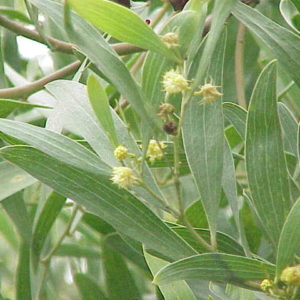
Australian / Tasmanian Blackwood Seed
Acacia melanoxylon£5.00 – £15.00 inc. VATAustralian Blackwood is also know as Sally Wattle. A fast growing evergreen, it has dark green pinnate leaves and in spring bears clusters of small milky white flowers. It is best suited to mild temperate climates and is not particularly frost hardy below minus 5 degrees centigrade. It produces a fine grained, hard wood. Grow in a sheltered spot backed by a wall. In warmer climates can be quite invasive.
-

Bay Laurel / Sweet Bay
Laurus nobilis£4.50 inc. VATThe leaves are the bay leaves used in cooking but it also makes an excellent hedge and is tolerant of maritime areas. Bay Laurel can produce excellent specimen trees and is also used for topiary.
-
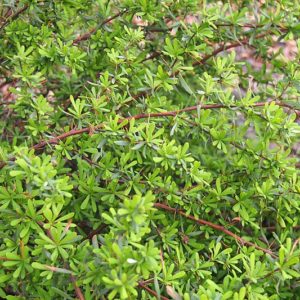
Berberis wilsoniae Seed
Berberis wilsoniae£5.00 – £8.00 inc. VATBerberis wilsonae, Barberry is a splendid small semi-evergreen shrub with sea green leaves and coral coloured clustered fruits after yellow flowers in May. This species has no cultivars and is mostly grown from seed. Good for low prickly hedging.
pic courtesy of Agnieszka Kwiecień, Nova, CC BY-SA 4.0 via Wikimedia Commons
-
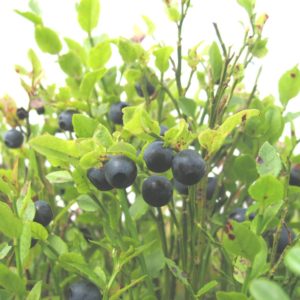
Bilberry Seed
Vaccinium myrtillus£5.00 – £10.00 inc. VATBilberry is a small deciduous shrub that is in flower from May to June and the tiny seeds in small purple berries ripen from July to September. It is noted for attracting wildlife and there is a particular bee called the Bilberry Bumblebee!
Seed from Scotland
-
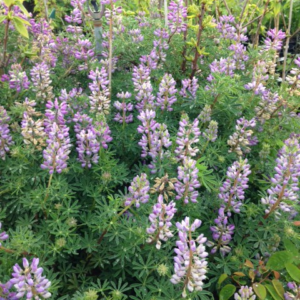
Blue Tree Lupin
Lupinus arboreus (Blue)£1.99 – £4.20 inc. VATTree Lupin is a short lived evergreen shrub that can grow to 2m tall. Flowers are delicately scented and are produced throughout the summer, bright dense spikes/clusters of blue or lavender coloured flowers. Nitrogen’fixing’ so good for soil fertility.
-
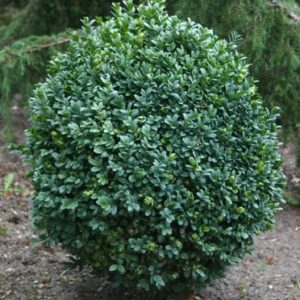
Box / Common Box
Buxus sempervirens£6.00 inc. VATBox will eventually grow into a small tree, but more normally a dense medium sized shrub. It produces masses of small, dark, evergreen leaves. Ideal for topiary and hedging purposes in the formal garden since it clips well, late summer.
-
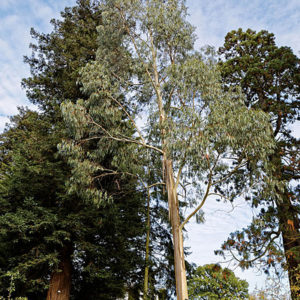
Cabbage Gum Seed
Eucalyptus niphophila£5.00 – £30.00 inc. VATA very hardy Eucalyptus. The stem of the tree is almost white through to green with a flaking bark. It has large leathery grey green lance shaped leaves. It is a relatively small tree (up to 15m tall) and so is ideal for gardens.
-
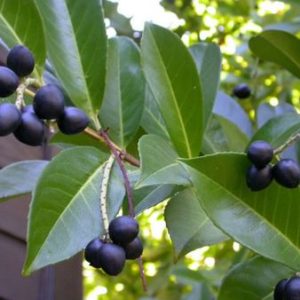
Cherry Laurel / Common Laurel
Prunus laurocerasus£5.00 – £10.00 inc. VATCherry Laurel is vigorous wide spreading evergreen shrub with dark shiny green leaves, often used for screening. It produces attractive erect clusters of white flowers in spring that give rise to small cherry like fruits that eventually turn black. Insects visit the flowers and birds eventually eat the berries. Clip in the summer, for hedging, and the best finish is by using secateurs!
-
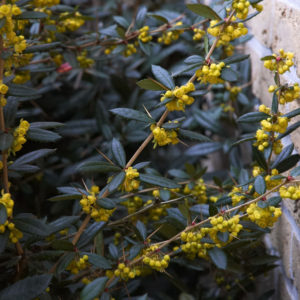
Chinese Barberry Seed
Berberis julianae£5.00 – £10.00 inc. VATChinese Barberry is a excellent densely growing, evergreen, spiny-leaved bush. The leaves are copper tinted when young. The scented yellow flowers are borne in bunches of up to 15. It makes a good hedging plant and security barrier.
-
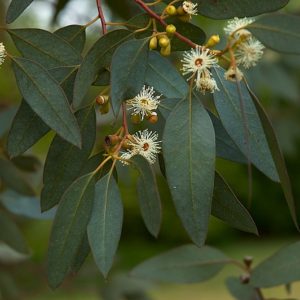
Cider Gum Seed
Eucalyptus gunnii£6.50 – £40.00 inc. VATEucalyptus or Cider Gum the best known and hardiest Eucalyptus in cultivation. Its evergreen juvenile leaves are rounded and an outstanding silver blue, much used in floristry. As they mature the leaves become sickle shaped. It can be allowed to develop into a specimen tree, pruned to bush size or coppiced. After pruning, the foliage will grow as juvenile again. Very fast growing. Unlike many Eucalypts, the bark tends to be smooth, not flakey. Flowers are creamy white, on and off through the season. Scented oils are released from crushed or burning leaves and are used as an antiseptic and to treat respiratory problems.
-

Common / English Yew
Taxus baccata£5.00 inc. VATYew is a small to medium sized tree with fruits that are a bright red aril, which contrasts superbly with the dark green foliage. The fruit is eaten by birds but is poisonous to people. Yew is tolerant of most soils and is often found on chalk formations in the wild. Very ancient ones are found in Churchyards all over the country – it was once held in great esteem by Druids and mystics.
-
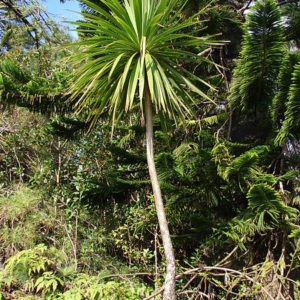
Cordyline Seed
Cordyline australis£5.00 – £19.50 inc. VATCordylines or New Zealand Cabbage trees grow into small evergreen trees with a single trunk topped with a dense mass of long sword like leaves. Small creamy white flowers in large terminal panicles are produced in early summer. A very striking architectural plant.
-
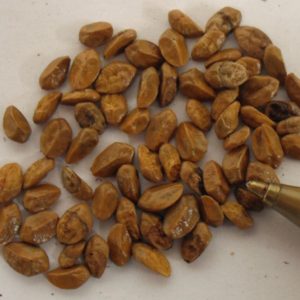
Cotoneaster simonsii seed
Cotoneaster simonsii£5.00 – £11.50 inc. VATCotoneaster simonsii is a large upright semi-evergreen with small white/pink flowers in June, bee friendly, followed by persistent red berries. Good as an informal hedge but can also be clipped quite hard into shape. Often known as Himalayan Cotoneaster, but this leads to confusion with other Cotoneasters.
-
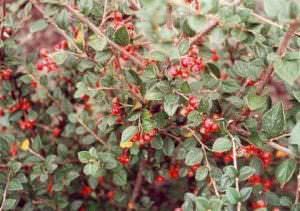
Diel’s Cotoneaster Seed
Cotoneaster dielsianus£5.00 inc. VATDiel’s is an evergreen cotoneaster with small ovate leaves and red fruit. Can be pruned to make a neater shape, but a hardy and useful filler. The tiny flowers are attractive to bees in the summer.
-

Eucalyptus kitsoniana/bog gum
£10.00 inc. VATEucalyptus kitsoniana
Good ornamental specimen for its broad glossy leaves and varied bark that sheds in ribbons. mallee form. Found inland and on coastal plains, and flats near water.Often grown for floristry.
-
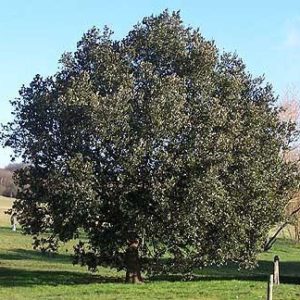
Evergreen / Holm Oak
Quercus ilex£6.50 – £10.00 inc. VATThe Holm Oak is a large evergreen tree with an attractive corrugated bark. The leaves are a dark glossy green not unlike holly but vary in shape and size. It can become deciduous in the very coldest areas but is an excellent tree for coastal areas.
Not for forestry purposes.
-
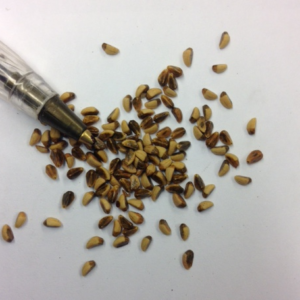
Firethorn Seed
Pyracantha coccinea£5.00 inc. VATFirethorn or Pyracantha is a large evergreen shrub that is valued for its outstanding display of red autumn berries. These are produced from the white flowers that appear in spring. Its dark green leaves are augmented by sharp thorns which when used as a boundary plant provide an effective security barrier.
-
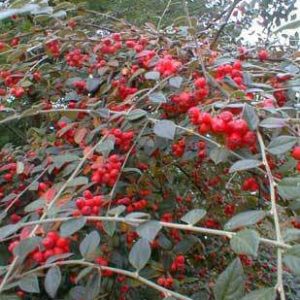
Franchet’s Cotoneaster
Cotoneaster franchetii£6.50 inc. VATFranchet’s Cotoneaster is a popular semi-evergreen shrub that is graceful and medium sized with sage green foliage. The white flowers blushed with pink give rise to ovoid scarlet-orange fruits. Soft relaxed growth can be pruned in to shape.
-

Gagnepain’s Barberry Seed
Berberis gagnepainii£7.00 inc. VATA small evergreen shrub that forms an impenetrable thicket making it ideal for hedges. The yellow flowers are borne in clusters of 6 or 12, in early summer, which give rise to black berries with a bluish bloom. Tolerant of most conditions.
-
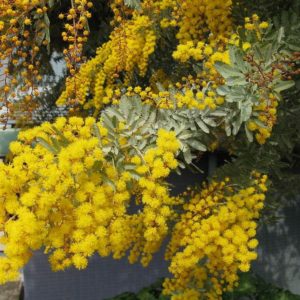
Golden Mimosa Seed
Acacia baileyana£6.00 – £25.00 inc. VATGolden Acacia or Cootamundra Wattle is a small evergreen tree/large shrub with silver grey ferny leaves and short spikes of pompom flowers between Dec and March. Lots of Pollen is produced so the tree is good for early insects. In fact it is planted for honey production commercially as well as for floristry. However, in warmer countries it tends to escape and be a bit of a plague in the wild. In the UK, it definitely needs to be in a conservatory or very sheltered sunny corner. Quite tolerant of drought.
-
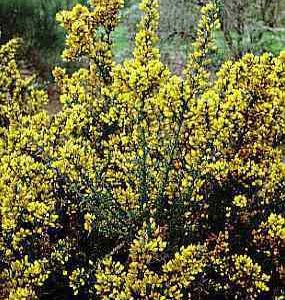
Gorse Seed
Ulex europaeus£5.00 – £10.00 inc. VATGorse is a dense fiercely spiny shrub. In mild areas the yellow, pea-like flowers, smelling of coconut, are produced throughout the year but more usually they flower from March through to May. Brilliant for insects. The shrubs thrive on, and prefer, very poor light or stony soils. They can act as good pioneers, nursing other less tough plants until they’re big enough to survive. No maintenance necessary, but can be pruned quite hard (using armoured gloves!)
-
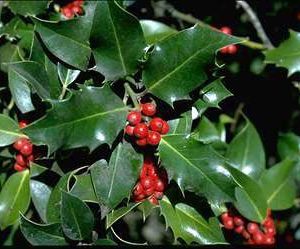
Holly Seed
Ilex aquifolium£5.00 inc. VATAn evergreen shrub or tree that can be very long lived with leaves that are ovoid, shiny and generally spiky. In winter, bright red holly berries contrast beautifully with the dark green foliage. There are some varieties with yellow berries, and some with non-spikey leaves. Usually a male and a female tree are required to produce berries on the female. Very useful for hedging, it grows quite fast to begin with but slows down as it ages. It can be clipped into shape(carefully!)
-

Ivy/Hedera Helix
Hedera helix£3.50 inc. VATCommon Ivy is adaptable and makes an excellent ground cover plant as well as being a good climber. Its evergreen leaves offer all year round green cover, and as such is used as a shelter and nesting site for small birds and insects. The scented spherical flower-heads offer a good source of nectar/pollen for late autumn flying insects and the blue-black berries are eaten through the late autumn and early winter by birds.
-
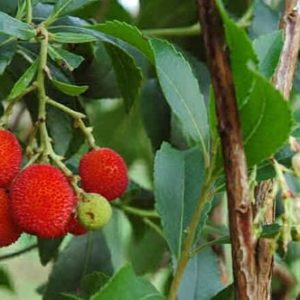
Killarney Strawberry Tree
Arbutus unedo£5.00 – £10.00 inc. VATThe Strawberry Tree is a small evergreen tree or bushy shrub, with deep brown bark which peels off in shreds. Its red fruits and white flowers are produced simultaneously in the autumn. Lime tolerant and hardy, this little tree can withstand gales and the most inhospitable coastal conditions.


Sign up to receive great news and offers